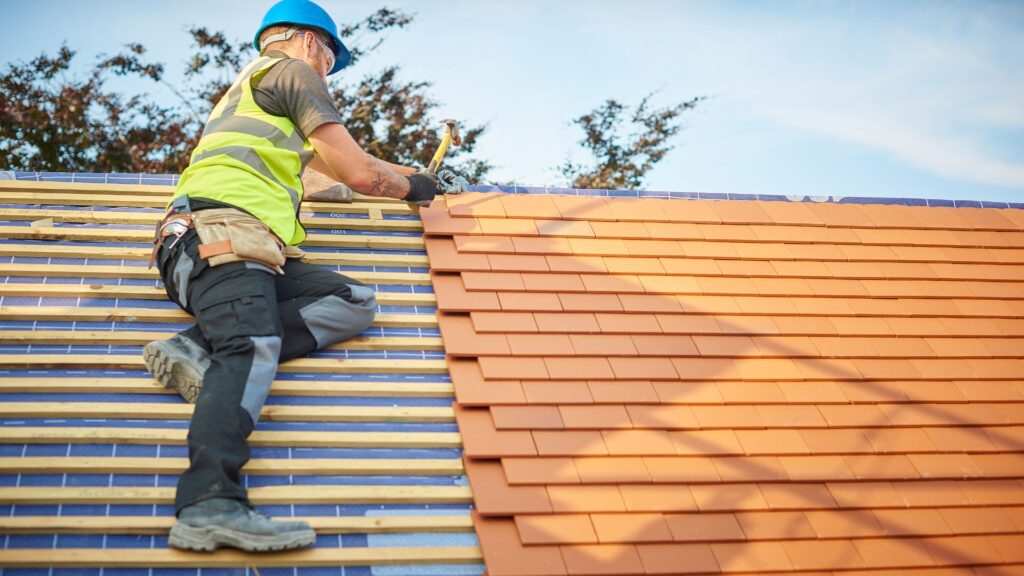Felt vs. Synthetic Underlayment: Which is Better for Your Roof?

When comparing felt vs. synthetic underlayment for roofing, consider the following: Felt offers good water resistance but can tear easily, while synthetic is more potent and tear-resistant. Synthetic lasts longer, with better UV and weather resistance. It provides superior waterproofing and breathability to prevent mold. Synthetic is lighter, easier to install, and comes in larger rolls. Felt is initially cheaper, but synthetic can save money in the long run. Understanding these differences is essential for your roofing project. A roofing company can help you consider this information for a well-informed decision regarding underlayment choice.
Composition of Underlayment Materials
The composition of underlayment materials plays an essential role in determining their performance and durability in roofing applications. Material properties such as strength, water resistance, and breathability are key factors when choosing between felt and synthetic underlayment. Felt underlayment, traditionally made from asphalt-saturated felt, offers good water resistance but may be prone to tearing. On the other hand, synthetic underlayment, commonly constructed from polypropylene or polyester, provides superior strength and tear resistance. Additionally, synthetic materials are often more environmentally friendly as they can be recycled and have a lower environmental impact than traditional felt underlayment. Understanding these material properties and environmental effects is crucial for making informed decisions in roofing applications.
Durability and Longevity Comparison
When evaluating the durability and longevity of underlayment materials for roofing applications, it is essential to consider their resistance to wear and tear over time. In a durability comparison between felt and synthetic underlayment, synthetic underlayment generally offers a longer lifespan due to its enhanced resistance to weather elements, UV rays, and tearing. While felt underlayment can provide adequate protection, it may deteriorate faster under harsh conditions, requiring more frequent replacements. Lifespan analysis shows that synthetic underlayment tends to outlast felt underlayment, making it a cost-effective choice in the long run. Therefore, synthetic underlayment proves to be a more durable and long-lasting option when considering durability and longevity compared to traditional felt underlayment.
Water Resistance and Moisture Protection
When evaluating water resistance and moisture protection between felt and synthetic underlayment for roofing applications, the performance under varying weather conditions is a critical factor that should be considered. Synthetic underlayment generally offers superior waterproofing effectiveness compared to traditional felt underlayment. This enhanced waterproofing capability is essential for safeguarding the roof structure from water infiltration, preventing potential damage, and prolonging the roofing system’s lifespan. Furthermore, synthetic underlayment often exhibits better breathability, allowing moisture vapor to escape from the roofing structure while maintaining a watertight barrier. This breathability helps prevent moisture accumulation within the roof assembly, reducing the risk of mold, rot, and other issues associated with excess moisture.
Installation Process and Ease
For peak efficiency and effectiveness in roofing projects, the installation process and ease of felt and synthetic underlayment are crucial in determining overall performance and durability. When it comes to installation, synthetic underlayment tends to be lighter and easier to work with than traditional felt underlayment. Its synthetic material often allows for easier cutting and maneuvering during installation. Moreover, synthetic underlayment typically comes in larger rolls, reducing the number of seams and speeding up the installation time. Installation tips for both types include ensuring proper overlap, fastening securely, and following manufacturer guidelines. The benefits of a more straightforward installation process involve saving time and labor costs, ultimately contributing to a smoother roofing project.
Cost Considerations and Budgeting
Cost considerations and budgeting are significant in deciding between felt and synthetic underlayment options for roofing projects. When deliberating on underlayment, conducting a thorough cost analysis and planning your budget is vital. Here are some key points to bear in mind:
- Initial Cost: Felt underlayment is generally more cost-effective upfront than synthetic options.
- Long-Term Expenses: Synthetic underlayment might have a higher initial cost but could save money in the long run due to its durability.
- Installation Costs: Factor in the installation expenses for both types of underlayment.
- Maintenance Costs: Consider which option requires less maintenance to estimate future costs accurately.
Other Roofing Tips:
